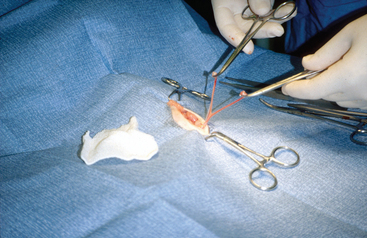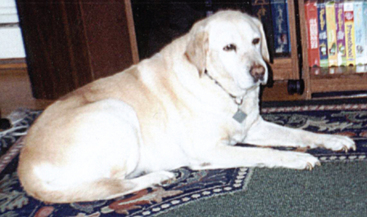11 Estrus Suppression, Sterilization, and Pregnancy Termination
I. ESTRUS SUPPRESSION
A. PROGESTOGENS
The manufacturer recommends that Ovaban not be used to suppress a bitch’s first estrus or to suppress more than two heat periods in a row. The drug should not be given to a bitch with a history of progesterone-dependent disease, such as mammary neoplasia or pyometra. Care should be used in administering the drug to older bitches that may already have some uterine changes and may be predisposed to pyometra with progesterone administration (see Chapter 16). The drug must not be administered to pregnant bitches because it can cause birth defects in offspring. Short-term side effects of progestogen administration include increased appetite, weight gain, lethargy, and possible mammary development.
II. STERILIZATION
A. OVARIOHYSTERECTOMY
OHE, or spay, is the complete removal of both ovaries, the uterine tubes, and the entire uterus, ideally to the level of the cervix (Figure 11-1). After OHE, bitches will not cycle, cannot get diseases of the reproductive tract, and are at decreased risk of developing mammary neoplasia. Bitches do not show a change in temperament after OHE any more than they show a change in temperament after breeding and whelping.
In the United States, OHE is the most common veterinary surgery performed. Complications are uncommon but may occur. Fairly common short-term complications that may be seen include bleeding from the sites where the ovaries or uterus were removed, opening of the incision, and infection of the incision. If the dog has internal bleeding after surgery, she recovers from anesthesia slowly and her mucous membranes are pale. Usually this occurs while she is still recovering in the hospital, and the veterinarian can quickly explore the abdomen and repair the bleeding site. Opening of the incision (dehiscence) occurs more commonly in very active dogs or in dogs that lick at the incision excessively. This usually is easily repaired and the dog is sent home with an Elizabethan collar that prohibits her access to the incision area. Infection of the incision may occur in dogs that lick at the incision excessively; antibiotics can be dispensed by your veterinarian.
Fairly common long-term sequelae to OHE include obesity and estrogen-responsive urinary incontinence (Figure 11-2). Obesity is the most common nutritional disorder in dogs, and many factors contribute to its development. Obesity should not develop after OHE in female dogs that are fed and exercised properly.
Estrogen-responsive urinary incontinence may develop in bitches spayed at any age. Some reports suggest onset of urinary incontinence earlier in the dog’s life if she is spayed before 3 months of age. Estrogen-responsive urinary incontinence is more common in bitches weighing more than 20 kg (44 pounds) as adults. Exact pathogenesis is unknown. Bitches present for “leaking” of urine when relaxed; usually the owner reports finding urine spotting where the dog sleeps. Treatment with estrogen, usually in the form of oral diethylstilbestrol (DES) or phenylpropanolamine, both of which act to improve the closure of sphincters in the urinary tract, is usually effective.
Stay updated, free articles. Join our Telegram channel

Full access? Get Clinical Tree




